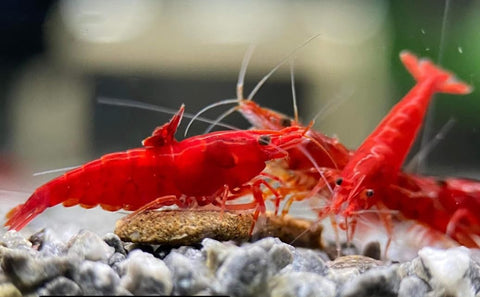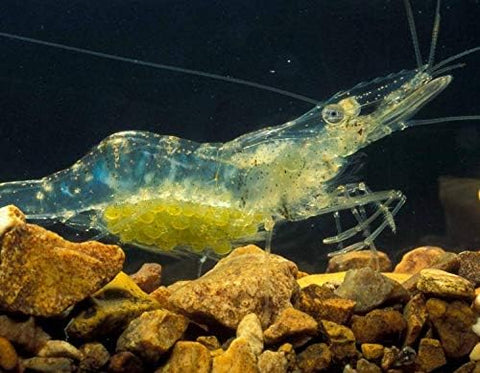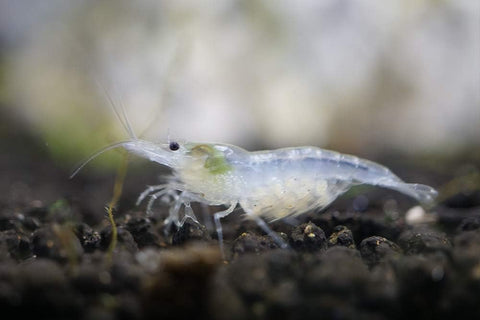Aquaponics is usually associated with fish and leafy greens. But one less well-known but equally interesting aspect of aquaponics is growing shrimp in systems that use water and plants. You read that right; you can cultivate shrimp alongside your greens and fish in your aquaponics system.
In this guide, well explore the intricacies, benefits, challenges, and rewards of integrating shrimp into your aquaponics setup. Whether you’re an experienced aquaponics fanatic looking to add to your system or a beginner wanting to learn more about sustainable seafood options, this blog will help you learn how to grow shrimp in aquaponics.
Raising shrimp at home can be a fun and rewarding aquaculture project Shrimp farming requires some initial investment and learning, but with the right setup you can harvest delicious homegrown shrimp from your backyard or indoor tank.
In this comprehensive guide, I’ll cover everything you need to know to get started farming shrimp at home. You’ll learn about:
- Benefits of raising shrimp at home
- Indoor vs. outdoor shrimp farming
- Equipment and tank setup
- Water quality requirements
- Selecting and acquiring shrimp
- Feeding and maintenance
- Growth cycles and harvesting
Let’s dive in to shrimp aquaculture basics so you can get growing!
Why Farm Shrimp at Home?
Here are some of the main advantages of raising shrimp yourself:
-
Sustainable seafood – Farmed shrimp have a lower environmental impact than wild-caught.
-
Know your source – You control the quality and cleanliness of home-raised shrimp.
-
Save money – Farming your own can be cheaper than buying shrimp retail.
-
Educational – Kids and adults alike can learn about aquaculture
-
Fun hobby – It’s an engaging project for shrimp lovers!
As long as you have some basic aquaculture supplies and knowledge, farming shrimp at home is a fulfilling endeavor.
Indoor vs. Outdoor Shrimp Farming
You can raise shrimp in indoor tanks or outdoor ponds/tubs depending on your climate and space. Here’s an overview of each approach:
Indoor Shrimp Farming
-
Use indoor aquarium tanks or tubs
-
Requires heaters and lighting to maintain water temperature
-
Limited by space available in your home
-
Easier to control water parameters
-
Lower biosecurity risks away from outdoor contaminants
Outdoor Shrimp Farming
-
Use large backyard ponds or plastic tubs
-
Takes advantage of natural sunlight and ambient temperature
-
More space for larger-scale production
-
Exposed to contaminants and predators
-
May require pond liners, aerators, and filters
Indoors is best for small-scale hobby farming, while outdoors suits larger commercial-size production. Beginners should start with indoor shrimp farming to get the hang of it. Now let’s look at what’s needed for setup and maintenance.
Shrimp Farming Equipment and Supplies
You’ll need the following equipment to start farming shrimp at home:
Indoor Tank Setup
-
Aquarium tank (10+ gallons) with lid
-
Submersible heater and thermometer
-
LED grow light or fluorescent bulb
-
Air pump, air stones, and tubing
-
Filter like a sponge, canister, or Hang-On-Back (HOB)
-
Gravel or coral substrate
-
Hiding places like rocks or synthetic plants
Outdoor Pond Setup
-
Sturdy plastic tub or lined pond (25+ gallons)
-
Pond heater and thermometer (for colder climates)
-
Pond filter and/or recirculating system
-
Aerators like air stones connected to air pump
-
Gravel or coral substrate
-
Hiding places and plastic pond plants
Monitor water parameters like temperature, pH, ammonia, etc. with a liquid test kit. Have nets, tubing, buckets, and other supplies for maintenance. Now let’s go over the critical factors for shrimp tank water quality.
Maintaining Proper Water Quality
Maintaining excellent water quality is key to healthy, fast-growing shrimp. Here are the optimal parameters:
-
Temperature – 70-85°F depending on species
-
pH – 7.0-8.5
-
Salinity – 10-35 ppt depending on species (measure with refractometer)
-
Ammonia/nitrite – 0 ppm (use test kit)
-
Alkalinity – 100-200 ppm
-
Oxygenation – 6-8 ppm (use air pump/stone)
Test water parameters daily at first. Perform partial water changes anytime ammonia or nitrites get above 0 ppm. Use dechlorinator with any new water added. Keeping stable, pristine water quality will allow your shrimp to thrive.
Selecting and Acquiring Shrimp
Once your tank or pond is fully cycled and prepared, it’s time to stock it with shrimp! You have a few options for acquiring juveniles:
-
Order from a shrimp hatchery online
-
Purchase from local aquaculture supplier or pet store
-
Obtain juveniles from another shrimp farmer
-
Buy adult shrimp to breed your own juveniles
Choose a species suited to your water type. Here are some top picks:
-
Freshwater – Ghost, cherry, crystal red/black, Amano
-
Brackish – Grass, Malaya, flower
-
Saltwater – Pacific white, black tiger
Introduce shrimp gradually to the tank and quarantine new arrivals. Provide lots of hiding spots for their comfort and security.
Feeding Your Shrimp
Provide a quality shrimp feed daily:
-
Use sinking pellets designed for shrimp
-
Feed 1-2 times per day only what they’ll finish in 1-2 hours
-
Alternate protein-rich feeds with veggie-based foods
-
Supplement with algae, blanched veggies, or commercial supplements
Maintain stable feeding times and amounts. Check that shrimp are actively eating – lethargy can signal problems. Target healthy, rapid growth with proper nutrition.
Tank/Pond Maintenance
Caring for your system requires diligence:
-
Test water parameters frequently and do partial water changes as needed
-
Clean filters monthly to prevent clogs and buildup
-
Use gravel vacuums to siphon waste from the substrate
-
Wipe down tank walls with magnet cleaner to remove algae
-
Prune and thin live plants when overgrown
-
Check equipment like air pumps, heaters, and lights for issues
-
Observe shrimp health daily and remove any deceased individuals
Consistency with maintenance will keep your shrimp thriving in a pristine environment.
Shrimp Growth Stages and Harvesting
It takes 3-4 months for most dwarf shrimp species to reach harvest size of 2-3 inches long. Here are the growth stages:
Nauplii – Newly hatched larvae, microscopic
Zoea – Develop swimming legs and antennae
Mysis – Resemble small adult shrimp with all appendages
Postlarvae – Metamorphose into miniature juvenile shrimp
Adolescent – Rapid growth phase for 3-4 months
Adult – Reach maximum size at 5-6 months old
Harvest shrimp by netting them out of the tank/pond. Measure each one to ensure they’ve reached target harvest size. Process harvested shrimp as you wish – cook fresh, freeze, sell to restaurants, etc. Replenish the tank with new juveniles and repeat the farming process.
With this complete guide, you now have all the information needed to successfully raise shrimp at home, from indoor tank setup to harvesting. Make sure to research your shrimp species thoroughly. Maintain excellent water quality and prompt tank maintenance. Have fun harvesting the fruits of your shrimp farming labor! Home aquaculture is a rewarding experience that can provide sustainable seafood for your family.

The Benefits of Integrating Shrimp in Aquaponics
- Diversity: Adding shrimp to your aquaponic system makes it more diverse, which can make it more stable and balanced.
- Source of nutrients: Shrimp waste gives plants extra nutrients, so they don’t need to use outside fertilizers.
- Ecosystem health: Shrimp helps the ecosystem stay healthy by taking part in the nutrient cycle and encouraging biological diversity.
- Protein production: Getting shrimp from your aquaponic system is a good way to get protein that will last.
Popular Shrimp Species for Aquaponics:
1. Red Cherry Shrimp: These freshwater shrimp are known for their bright red color and are often kept as decorations because they help move nutrients around in the water.

2. Ghost Shrimp: Freshwater ghost shrimp are clear and make great scavengers in aquaponic systems, helping to get rid of waste and leftover food.

3. Snowball Shrimp: Snowball Shrimp are almost as hardy and breed almost as swiftly as Cherry Shrimp.

Backyard Shrimping with Brent Hood
How do I start a shrimp farm?
Shrimp farms must not be prone to flooding and be located far from areas that use pesticides. Your shrimp farm should be 2 to 5 feet deep and have a 1 to 5 acres surface area. Hire skimmers, aerators, and filters to keep a suitable water quality. Also, fertilizing the pond will provide plenty of natural food for the shrimp through algae.
How do I choose the best shrimp for shrimp farming?
Next, you’ll need to research the different species of shrimp that are suitable for farming. Some popular choices include freshwater prawns and Pacific white shrimp. Each species has its own specific requirements, so it’s important to choose the right one for your setup. Water quality is one of the most crucial factors in successful shrimp farming.
How to raise shrimp at home?
Title: How to Raise Shrimp at Home Shrimp farming can be a rewarding and sustainable way to raise your own seafood at home. Before you begin, you’ll need to consider the size of the tank or pond you plan to use, the species of shrimp you want to raise, and the necessary equipment and supplies.
What type of shrimp is best for home farming?
3. What species of shrimp are best for home farming? Some popular species for home shrimp farming include cherry shrimp, ghost shrimp, and amano shrimp. Research the specific needs of each species before making a decision. 4.
